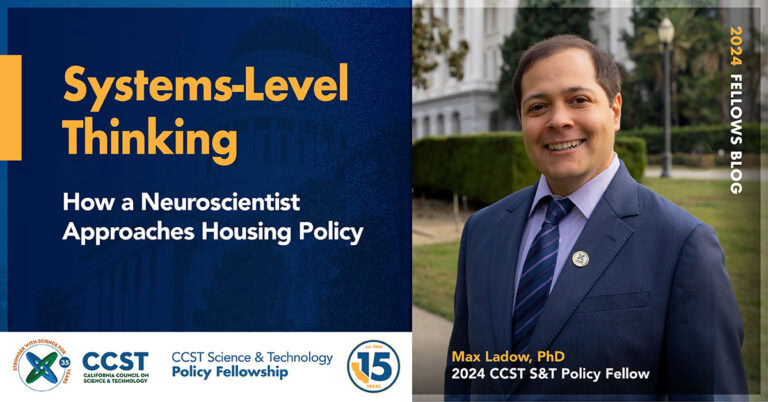CCST’s Brie Lindsey, PhD, Hired as Deputy Director at California Ocean Science Trust
JPL Steers Mars Rover from Pasadena to Martian Surface, And Beyond
August 9, 2012 | CCST Newsroom, Federal Research in California | Contact: M. Daniel DeCillis

This past Sunday, August 5, people around the world watched closely as the Mars Curiosity rover executed a complex and unprecedented landing procedure to arrive safely on the Martian surface, lowered on a ‘sky crane’ kept up by booster rockets. But no one was watching more intently than the more than 1400 scientists and engineers in the Mission Support Area at NASA’s Jet Propulsion Laboratory (JPL) in Pasadena, California, which erupted into jubilant cheers as the rover transmitted confirmation that it had successfully landed without a hitch.
“This is an amazing achievement, made possible by a team of scientists and engineers from around the world and led by the extraordinary men and women of NASA and our Jet Propulsion Laboratory.” said NASA Administrator Charles Bolden in a statement to the press following the landing.
JPL – a CCST affiliate institution – is a division of the California Institute of Technology (Caltech) in Pasadena. It is the lead U.S. center for robotic exploration of the solar system and has an annual budget of $1.6 billion. Curiosity was designed, developed and assembled at JPL, where the twin Mars rovers Spirit and Opportunity were also built. Caltech employs over five thousand people, not counting additional contractors.
“California has long been home to the aerospace industry,” said CCST Council Member Charles Elachi, JPL Director and Vice President of Caltech. “Aviation took off in the Golden State after the California Institute of Technology built a state-of-the-art wind tunnel nearly a century ago. And America’s entry into the space age came about in 1958 when the Jet Propulsion Laboratory built and helped launch the first U.S. Satellite, Explorer 1. Now, a half century after Explorer we are celebrating the most sophisticated rover ever sent to Mars.”
The one-ton Curiosity rover is the largest ever landed on Mars, carrying 10 different scientific instruments and a robotic arm that can drill into rocks and collect samples for analysis. However it’s just the latest in a long series of successful Mars missions managed by JPL, which have included the Viking orbiters (1975), Pathfinder (1997), Global Surveyor (1997), Reconnaissance Orbiter (2005), and Phoenix (2008). And JPL has also sent craft beyond Mars, including Voyager and Galileo; JPL also designed, built and operates NASA’s Deep Space Network, a system of antenna stations located in California’s Mojave Desert, Spain and Australia.
“Why has all this ingenuity and innovation happened in California? Climate is often cited as one factor, but the most important reason is talent,” said Elachi. “The state has both attracted and through its educational system produced some of the brightest minds in the world.”
With the end of the space shuttle program, the programs managed by JPL have assumed an even more central role for NASA, continuing to break new ground with every mission.
“If ever you thought America is losing its edge, think again,” said former CCST Council Chair Charles F. Kennel, Distinguished Professor of Atmospheric Science, Emeritus at the Scripps Institution of Oceanography. “Curiosity, another NASA technical triumph, is a testimony to JPL’s courage to dare mighty things and then to follow through with style.”






